Denmark: Copenhagen – Den Blå Planet
On our last day in Copenhagen, we visited Den Blå Planet– Denmark’s National Aquarium. It’s located in Kastrup, not far from the airport, and sits right along the Øresund, that narrow stretch of water separating Denmark from Sweden. The building itself is a stunner. Surrounded by a reflective pool and shaped like a swirling vortex, it’s sleek, modern, and almost futuristic.
At 10,000 square meters, it’s massive. The main halls are wide and airy with towering ceilings, and even on busy days, it probably takes a huge crowd to make the place feel packed.
Three Worlds Under One Roof
The aquarium is divided into three main sections, each offering a different kind of magic.
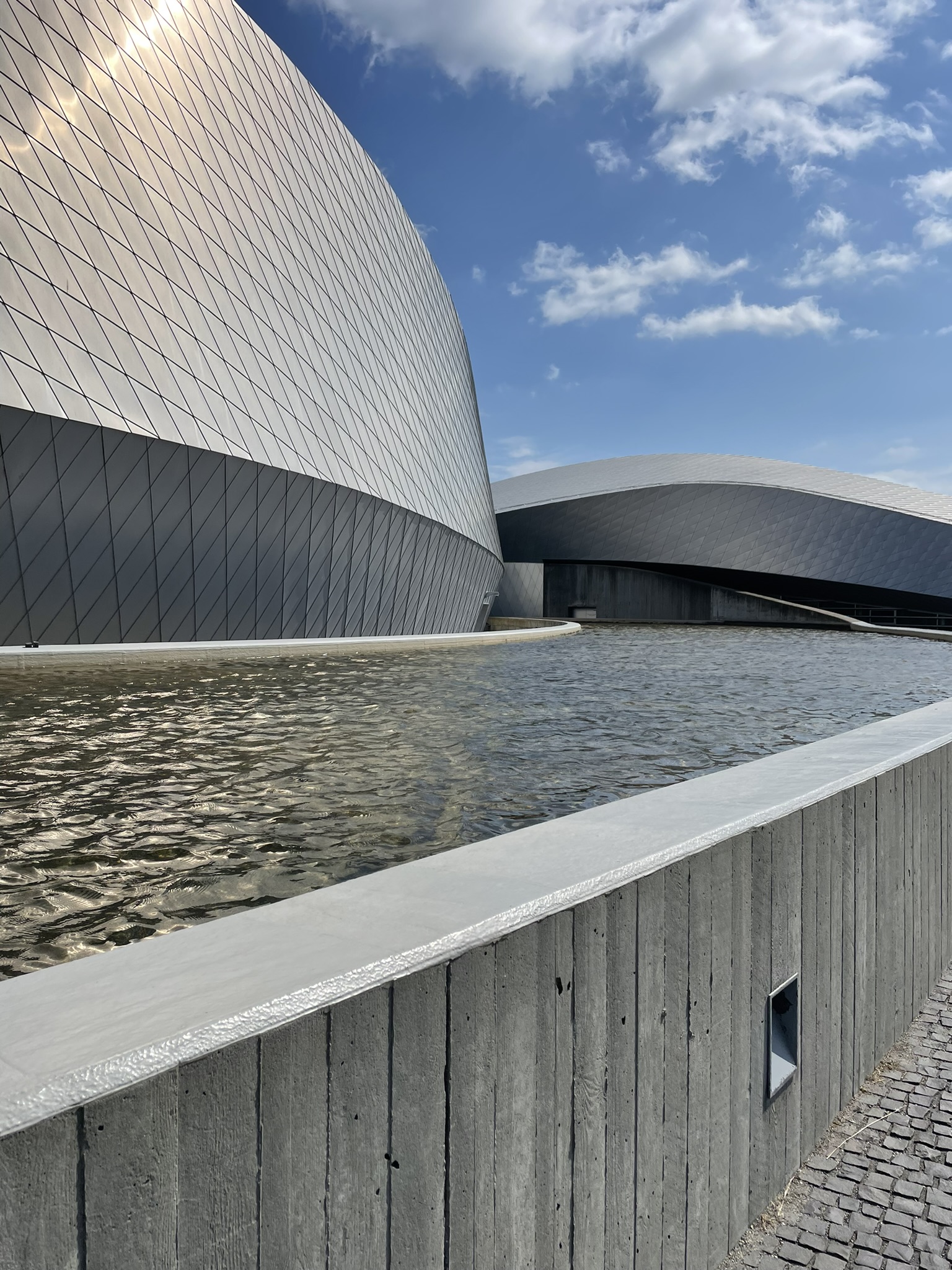
1. Cold Waters of the North
The first section explores marine life in Denmark and Northern Europe. This was one of my favorite parts. The animals here are built for cold water, and the displays are creative, calming, and quietly enchanting.
There’s the classic “anchor with fish” tank, simple but always mesmerizing.
And then, the sea otters. Two of them live here, both rescued as infants from Alaska. One had a broken jaw after a boat strike, and the other was found alone at barely a day old. Watching them felt bittersweet, part awe, part heartache. You can’t help but feel conflicted about seeing such intelligent animals in captivity… but then again, they wouldn’t have survived in the wild.
They groom for hours and need loads of enrichment from their keepers. And yes, they were absolutely magical to watch.
In this section, you’ll also find the puffin exhibit, designed to look like the cliffs of the Faroe Islands. There’s a touch pool too, called a sanseakvarium (sensing aquarium) in Danish. I have mixed feelings about this one… adorable marine creatures getting poked by curious hands always makes me a bit uneasy. Flashbacks to “Finding Dory,” anyone?
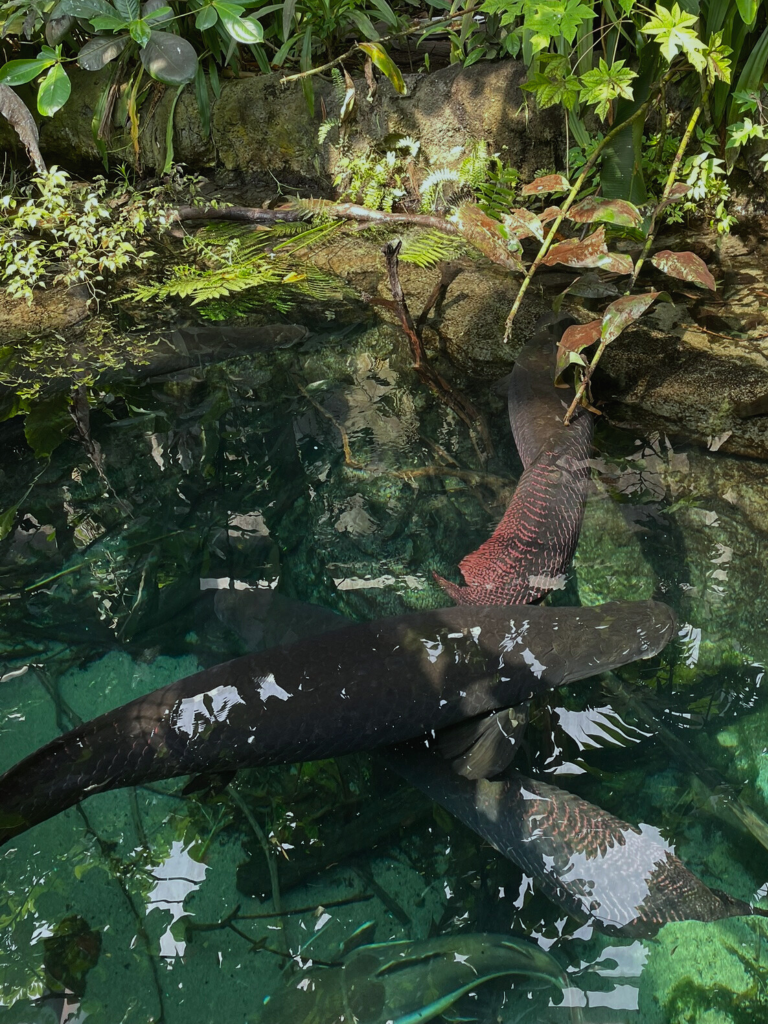

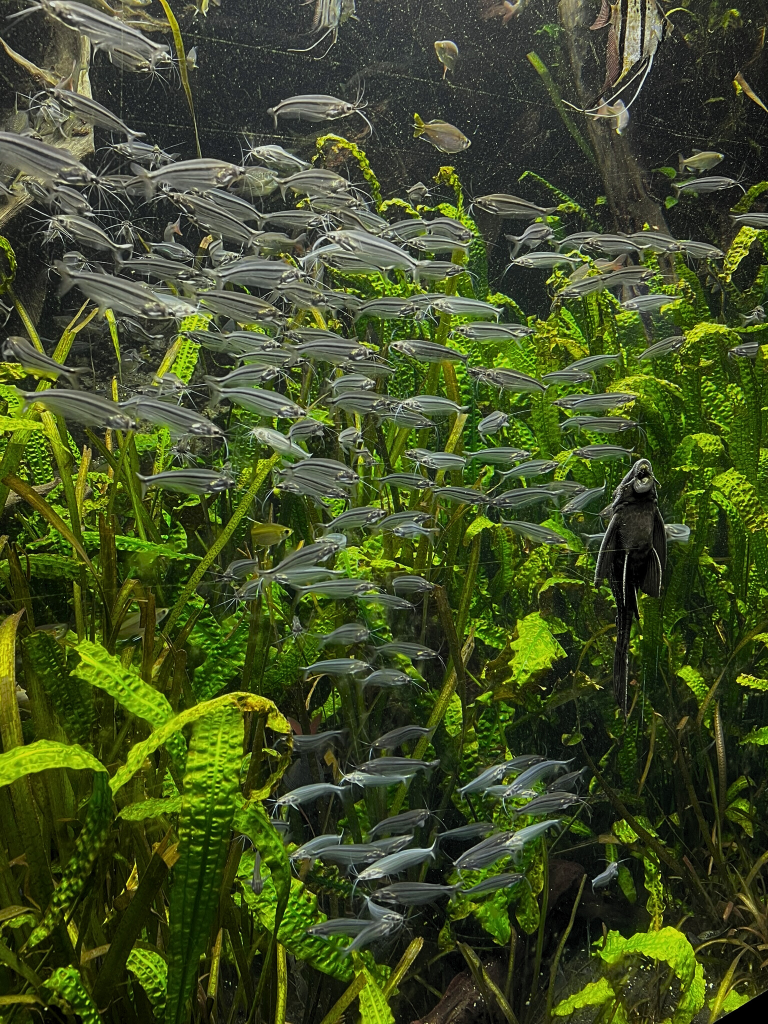
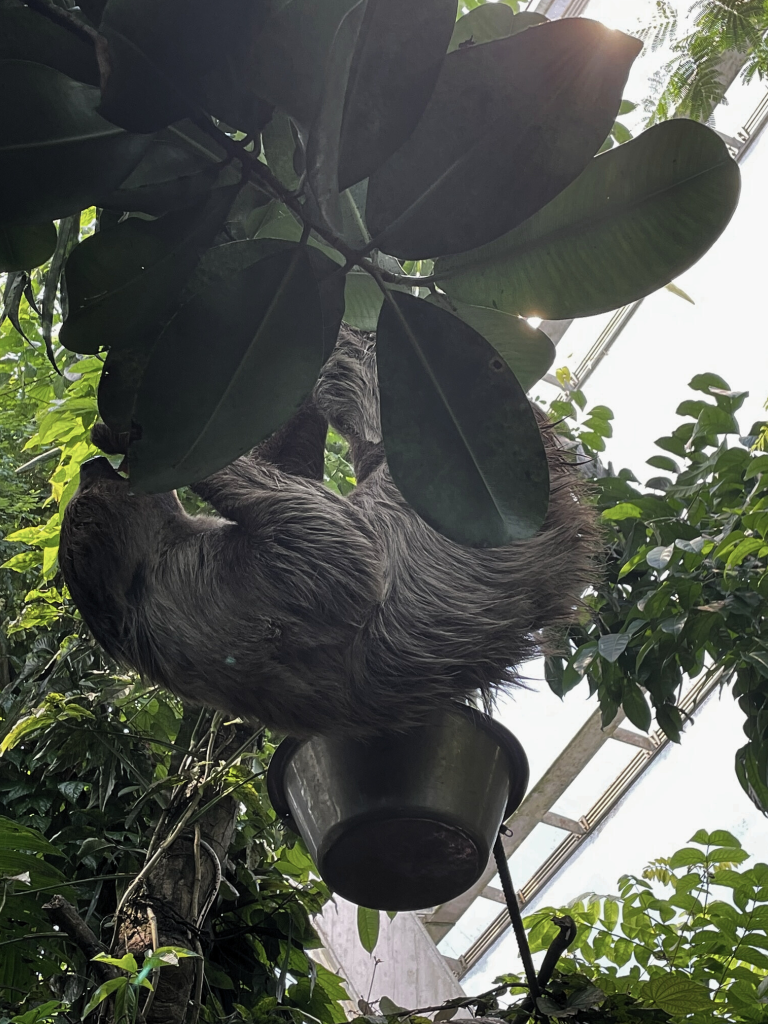
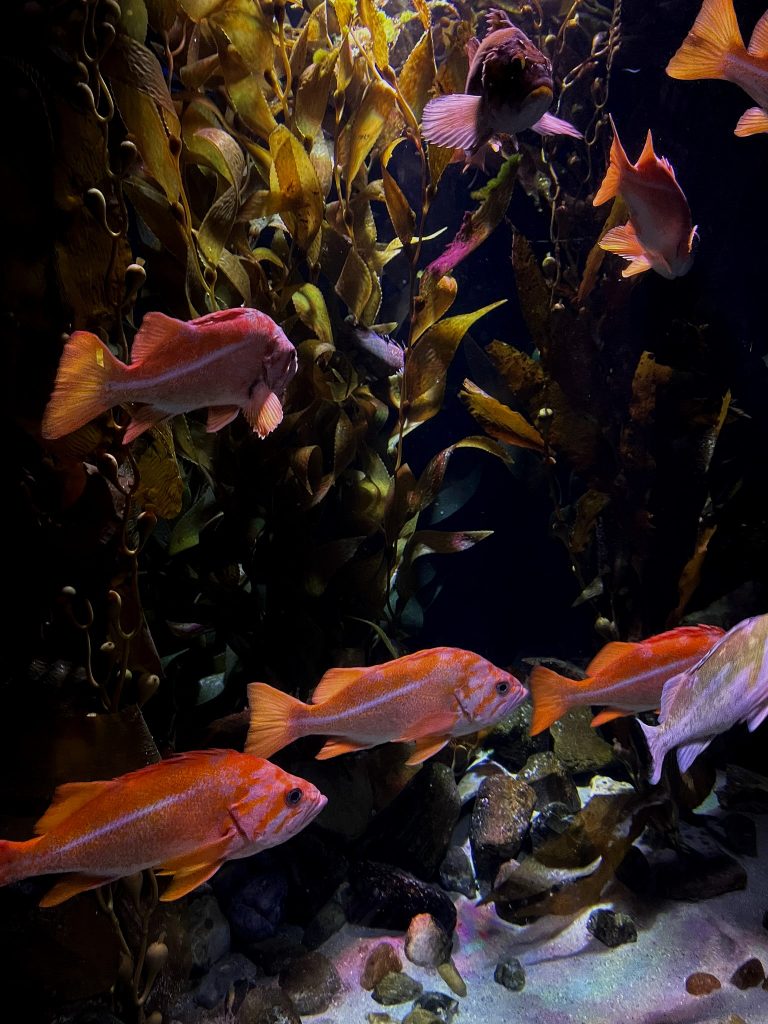

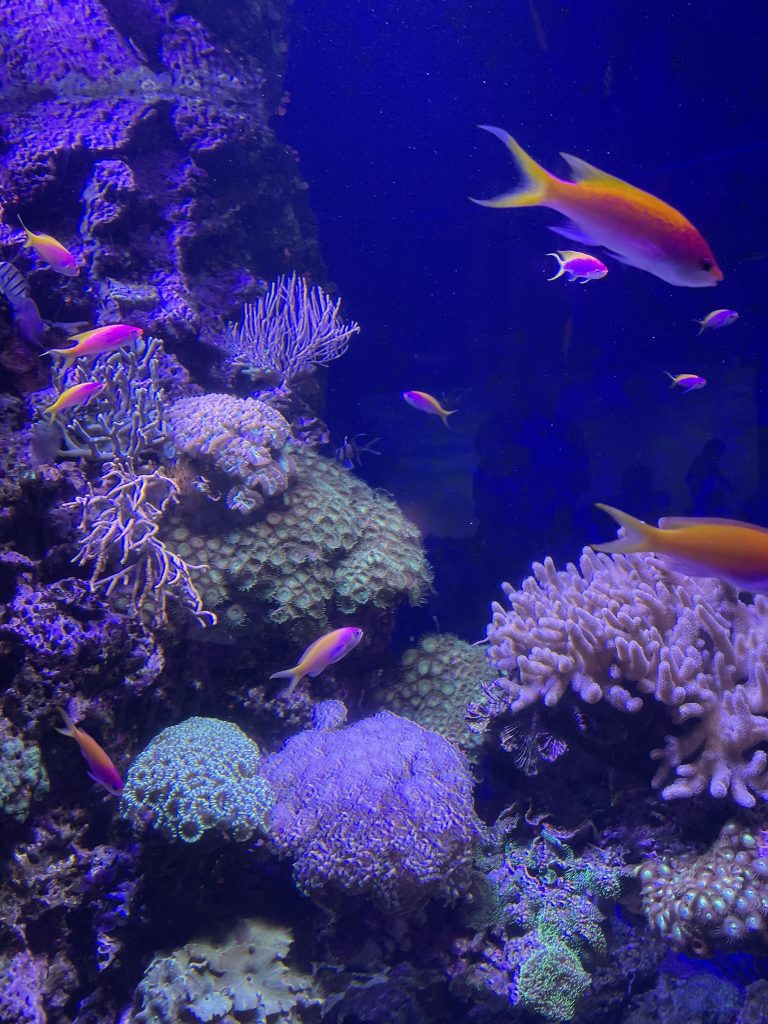
2. Tropical Lakes and Rivers
Next up is the rainforest and freshwater zone, a total sensory experience. Warm, humid, and brimming with life.
We saw:
- Piranhas
- Frogs
- Terrapins
- Arapaimas (literal river monsters)
- Pancake-sized black rays with white polka dots
- A sloth (!), butterflies, and fruit bats
- Electric eels pulsing away in their own tank
It’s lush and steamy in this section, a welcome break from the Danish chill. I imagine it’s a favorite among expats and tropical souls alike. Definitely my favorite part of the visit.
3. Oceans of the World
The final section is dedicated to the wider oceans, a daunting task, but Den Blå Planet pulls it off beautifully.
The highlight is the Ocean Tank, which holds four million liters of saltwater. Inside swim:
- Hammerhead sharks
- Massive rays
- Colorful coral fish
- Seahorses
- Leafy seadragons
There’s even an underwater viewing tunnel where you can watch fish glide overhead and imagine rowing a boat across the surface above. It’s the kind of thing that makes you feel small in the best way.
High-Tech Meets Nature
One thing I really appreciated is how the aquarium blends interactive tech into the experience: virtual reality, multimedia displays, and touchscreen learning stations. It not only makes the visit more engaging, but it also means fewer animals are needed for display. Less stress for them, more fun for us.
Fish & Chips Finale
We wrapped up the day with fish & chips (yes, I see the irony) at the aquarium’s back patio. The sun was shining, planes were landing at the nearby airport, and kids were playing in the outdoor playground.
It was a simple, peaceful way to end a day that stirred up awe, emotion, and wonder.
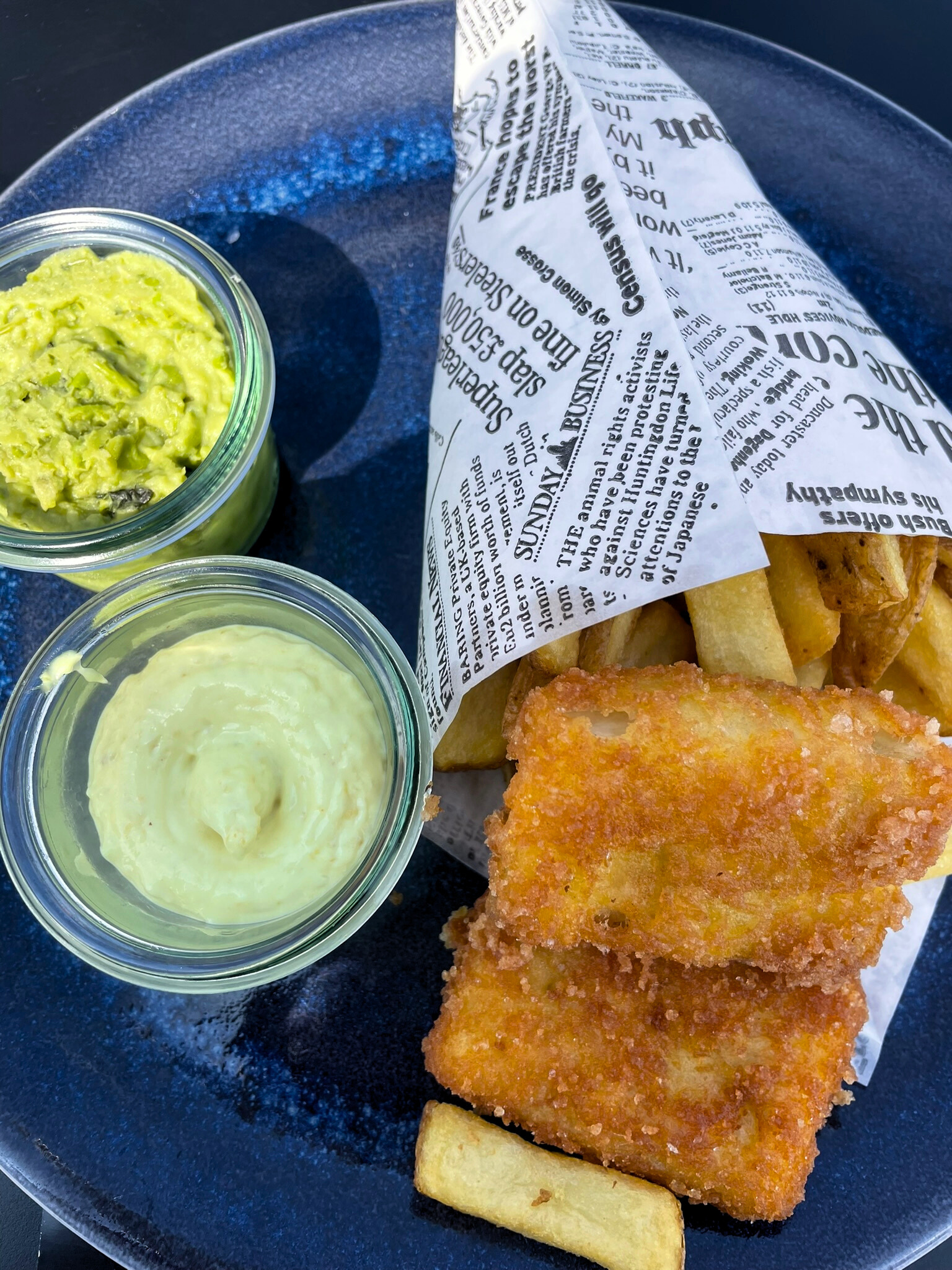
Final Thoughts
If you’re in Copenhagen and have even a hint of curiosity about the sea, Den Blå Planet is absolutely worth visiting. It’s family-friendly, beautifully designed, and surprisingly reflective.
Next time we’re in Denmark, we’ll make sure to check out the smaller Øresund Aquarium in Helsingør, which focuses entirely on local marine life. But for now, this one swept us away in the best kind of vortex.








